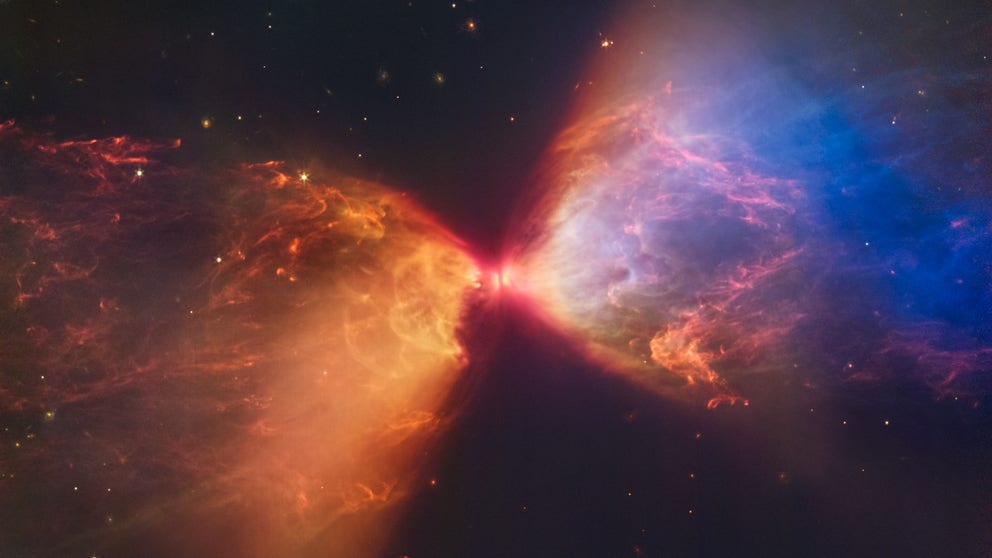See galaxies in ‘exquisite detail’ in images from NASA’s James Webb Space Telescope
By studying images from the James Webb Space Telescope, scientists may see processes similar to those that occurred in our early universe and better understand how galaxies form over billions of years.
See the latest stunning images taken by the James Webb Space Telescope
The James Webb Space Telescope has released more mesmerizing images of the deepest corners of our universe.
On Thursday, NASA released images of three galaxies in "unprecedented resolution," giving scientists a peek at the formation of young stars and galaxies.
The images were taken using NASA’s James Webb Space Telescope. Launched on Dec. 25, 2021, the large infrared telescope is currently orbiting the sun from about 1 million miles beyond Earth, or four times further away than our moon.
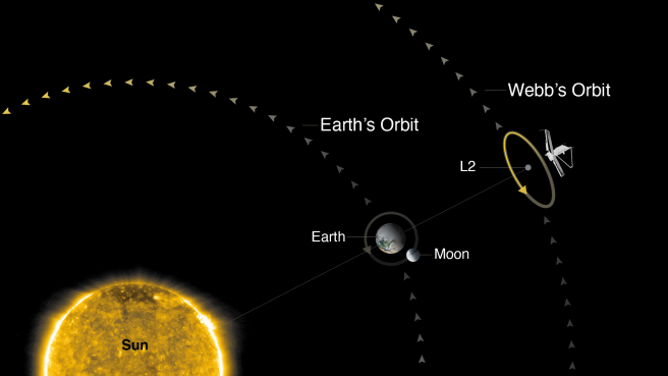
Webb will operate at the second Lagrange point in space.
(NASA / NASA)
With these latest images, JWST is able to provide scientists a first look at gas, dust and star formation in nearby galaxies with unprecedented resolution at infrared wavelengths, NASA said.
The three galaxies pictured
The galaxies pictured in the new images are NGC 1433, NGC 1365 and NGC 7496. The "NGC" designation comes from the galaxies' classification within A New General Catalogue of Nebulae and Star Clusters, the oldest galaxy catalog in use.
NGC 1433 is the farthest of the three galaxies, located about 166 million light-years away in the southern sky constellation Eridanus.
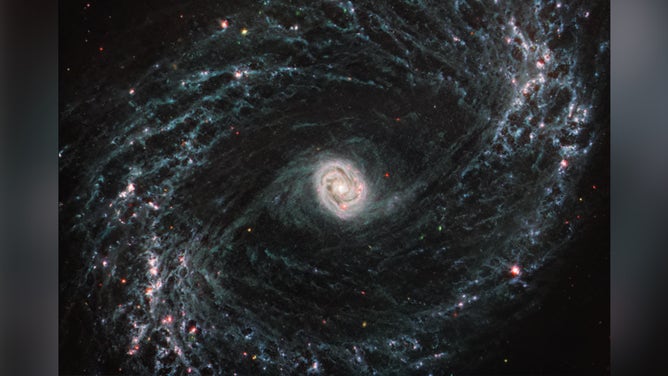
NGC 1433 is a barred spiral galaxy with a particularly bright core surrounded by double star forming rings.
(NASA, ESA, CSA, and J. Lee (NOIRLab). Image processing: A. Pagan (STScI) / NASA)
NGC 1365 lies about 60 million light-years away in the constellation Fornax.
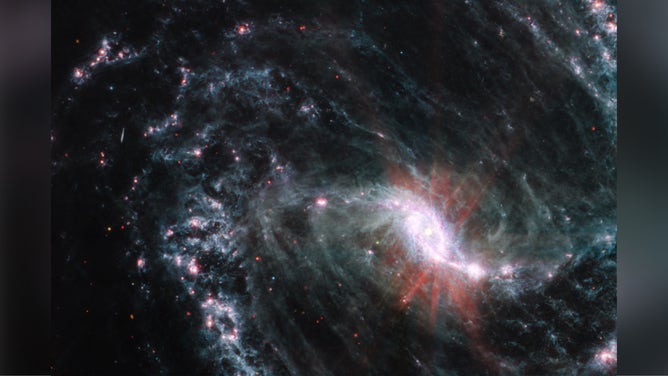
In this image of NGC 1365, clumps of dust and gas in the interstellar medium have absorbed the light from forming stars and emitted it back out in the infrared, lighting up an intricate network of cavernous bubbles and filamentary shells influenced by young stars releasing energy into the galaxy’s spiral arms.
(NASA, ESA, CSA, and J. Lee (NOIRLab). Image processing: A. Pagan (STScI) / NASA)
NGC 7496 is the closest of the three galaxies, located about 24 million light-years away in the constellation Grus.
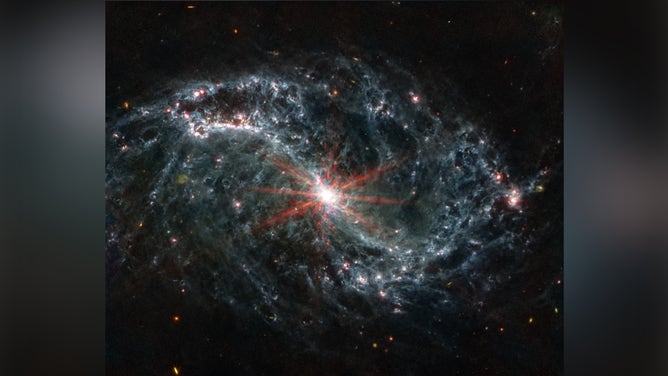
The spiral arms of NGC 7496 are filled with cavernous bubbles and shells overlapping one another in this image from MIRI. MIRI, or Mid-Infrared Instrument, is one of Webb’s four scientific instruments.
(NASA, ESA, CSA, and J. Lee (NOIRLab). Image processing: A. Pagan (STScI) / NASA)
"The clarity with which we are seeing the fine structure certainly caught us by surprise," said David Thilker of Johns Hopkins University in Baltimore, Maryland. Thilker is also a member of the Physics at High Angular resolution in Nearby Galaxies (PHANGS) collaboration.
PHANGS is an international group of more than 100 researchers who are carrying out the largest survey of nearby galaxies by Webb, according to NASA.
NGC 1433, NGC 7496 and NGC 1365 are just three of 19 spiral galaxies that the PHANGS team is studying based on data and high-resolution imagery from Webb.
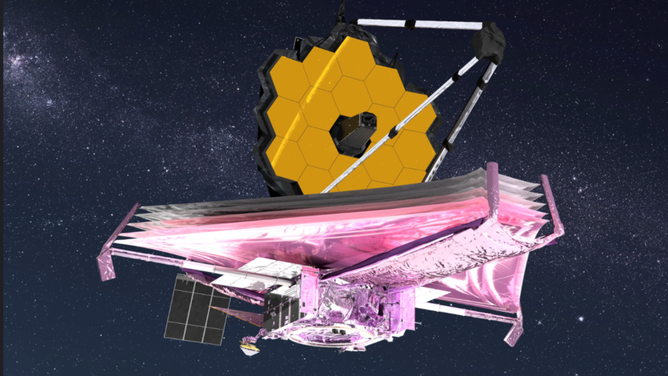
An artist’s conception of the James Webb Space Telescope in space shows all its major elements fully deployed.
(NASA GSFC/CIL/Adriana Manrique Gutierrez / NASA)
FIRST DISCOVERED BY HUBBLE, JWST GIVES EARLY UNIVERSE GALAXY NEW SPARKLE
"Areas which are completely dark in Hubble imaging light up in exquisite detail in these new infrared images, allowing us to study how the dust in the interstellar medium has absorbed the light from forming stars and emitted it back out in the infrared, illuminating an intricate network of gas and dust," said PHANGS team member Karin Sandstrom of the University of California San Diego.
With its infrared images, JWST is capturing light that has traveled the universe for up to 13.5 billion years, which is nearly the age of the universe.
What we hope to discover with the James Webb Space Telescope
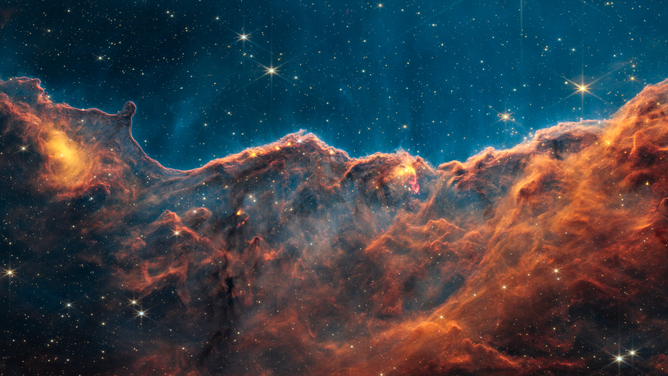
Image of the Cosmic Cliffs, a region at the edge of a gigantic, gaseous cavity within NGC 3324, captured by Webb’s Near-Infrared Camera (NIRCam).
(NASA, ESA, CSA, STScI)
According to NASA, this means that the light captured by the Webb telescope may come from the first stars and galaxies ever formed.
‘BURIED TREASURE’: JAMES WEBB TELESCOPE'S NEWEST IMAGES SHOW STAR AT BIRTH
By studying images from JWST, such as those of the three galaxies, scientists may be given a peek at processes similar to those that occurred in our early universe and better understand how galaxies form over billions of years.
NASA added that the data and images provided by the James Webb Telescope are giving researchers new insight into how the beginnings of star formation, some of the smallest-scale processes in our universe, impact the evolution of galaxies, the largest objects in our universe.
